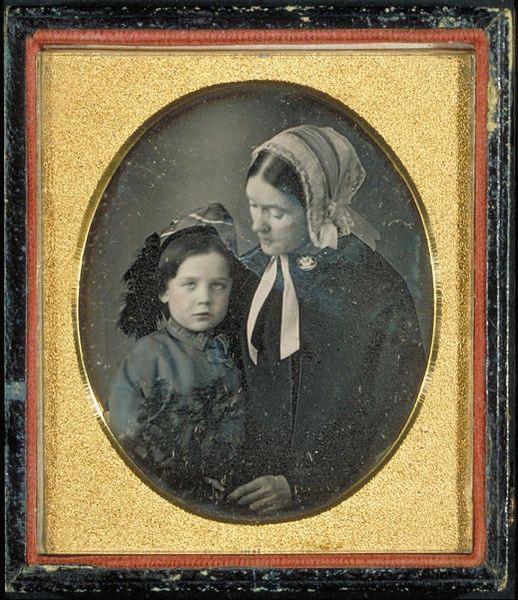
4 minute read
Women Who Influenced Concord's History
by Richard Smith
Here in Concord, our “Two Revolutions” revolved around the names Ripley, Emerson, Hawthorne, and Thoreau. But these great men were surrounded by equally impressive and influential women, who also played a pivotal role in our nation’s history.
Advertisement
The Brilliant Scholar
Sarah Alden Bradford was born in Boston in 1793, the direct descendant of two Pilgrim families. She had an inquisitive mind from an early age. Her father was a sea captain and often brought her books from his travels. Sarah taught herself to read French and Italian, and also studied chemistry, physics, and botany on her own. As a teen, it took Sarah a few weeks to get up the courage to ask her father for permission to study Latin. When she finally did ask, her father laughed and said, “A girl study Latin! Yes, study Latin if you want to. You may study anything you please.” She learned several other languages as well, including Greek, German, and even Sanskrit!
In 1818 Sarah married the Reverend Samuel Ripley, the son of Concord’s minister Ezra Ripley. Together the two would run a small boarding school, but it was Sarah who earned a reputation as a first-rate scholar and educator. Harvard’s president Edward Everett once commented that Sarah could have filled in for any professor at the college, had it been allowed. As it was, Harvard boys who’d been suspended due to bad grades were sent to Sarah (now living with her husband in the Old Manse in Concord) and it was reported that they would come away “better instructed than they would have been if they had stayed in Cambridge.”

The Old Manse
The Passionate Abolitionist
Ralph Waldo Emerson was world-famous as The Sage of Concord. He was married in 1835 to Lydia Jackson of Plymouth, Massachusetts; it was his second marriage, and Lydia’s first. He soon re-christened his new wife “Lidian”, hoping to avoid her name being pronounced “Lidiar” as was common in the New England dialect. It is the name she would use for the rest of her life, but Emerson also called her “My Asia’, “My Queen”, or just “Queenie.”
Lidian was brilliant and funny and it was her intellect that attracted Waldo to her in the first place; in fact, he proposed after meeting her just once! Even more than her husband, Lidian was a Reformer and was involved in many of the social issues of her day, including the abolition of slavery and the fight for women’s rights. Every year on Independence Day she would decorate the Emerson front fence with black crepe, rather than red, white and blue, as a sign of mourning for the millions of enslaved people still held in bondage.
When Waldo began speaking out against slavery in the 1840’s, it was mainly due to Lidian’s influence. She was also an early and vocal advocate for animal welfare. When she died in 1892 (ten years after Waldo) she was remembered as “a stately, devoted, independent person...and given up to her garden, her reforms, and her unceasing hospitalities.”

Lydia Jackson Emerson and Edward Waldo Emerson
The Talented Artist
Another resident of the Old Manse was Sophia Peabody Hawthorne, the wife of Nathanial Hawthorne. The couple arrived in Concord on their wedding day, July 9, 1842 and theirs was the great Concord romance.
Sophia was an accomplished artist and illustrator. One year her paintings fetched 60 dollars – almost a year of rent for the young family! She illustrated her husband’s short story, “The Gentle Boy: A Thrice Told Tale” in 1838, and her drawings were used in Hawthorne’s book “Grandfather’s Chair.” She would outlive her husband by seven years, dying in London on February 26, 1871.

Sophia Peabody Hawthorne
The Human Rights Advocate
In 1837, the mother and sisters of Henry David Thoreau (along with their friend Lidian Emerson) founded the Concord Female Anti-Slavery Society. Helen Louisa was the first born of the Thoreau siblings in 1812. She was, in many ways, just as radical and intellectual as her brother Henry. She spoke several languages and she and her brother wrote letters to each other in classical Greek. When Frederick Douglass visited Concord in 1844, he and Helen Sophia Peabody Hawthorne became correspondents, and she became well known in abolitionist circles. Along with her anti-slavery sentiments she was an advocate for Native American rights, and she taught school for a few years as well, until her health gave out.
Like her brother, Helen suffered from tuberculosis and she would succumb at just 36 years old to the disease on June 14, 1849. Her obituary appeared in William Lloyd Garrison’s Liberator under the heading, “Another Friend of The Slave Gone”. She was, it said, “intelligent and true” and “endowed by nature with tender sensibilities, quick to feel for the woes of others.” It continued: “She had a mind of fine native powers, enlarged and matured by cultivation.”
These passionate, intelligent, and talented women were part of the backbone of Concord. They worked for the betterment of society through reform, literature, art, and education. While their stories may not be as well-known as those of their male contemporaries, they certainly played a key role in creating Concord’s legacy.
Richard Smith has been an independent historian and writer in Concord since 1999. He is the General Manager of Concord Tour Company and has written five books.





